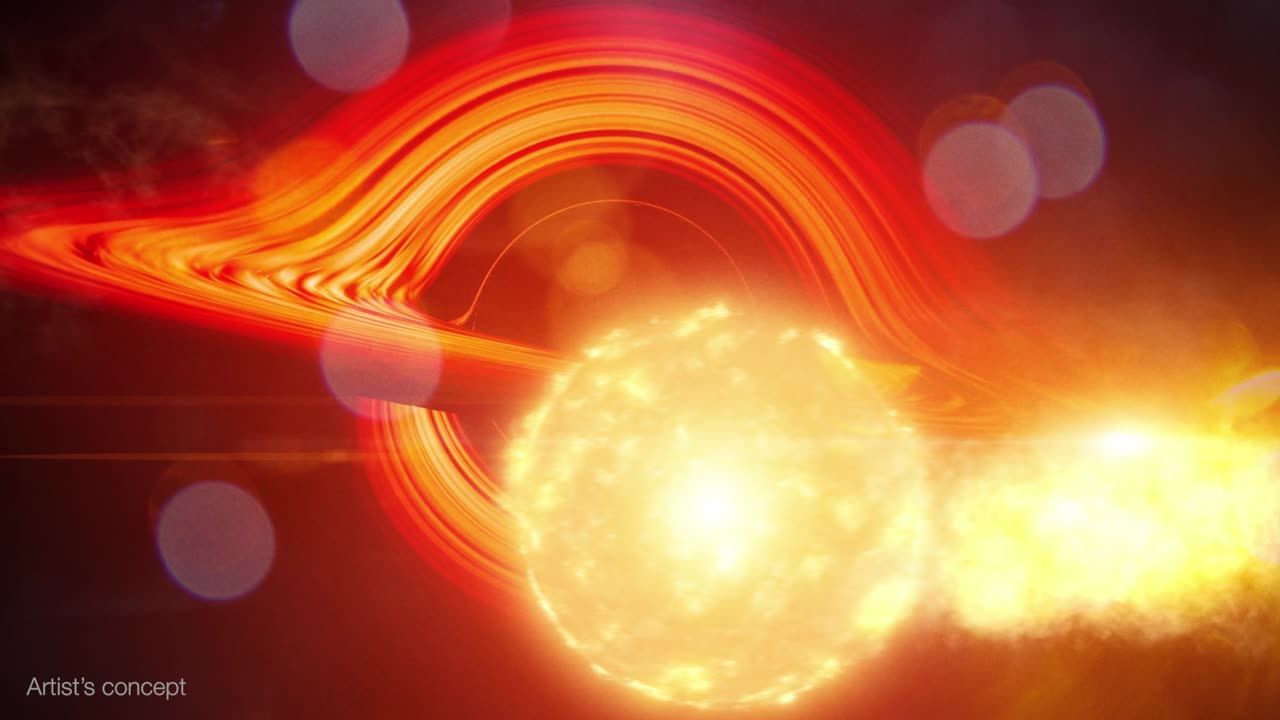Premium Only Content

Swift Utilizes Innovative Technique to Detect a Feeding Black Hole
Watch to learn how an update to NASA’s Neil Gehrels Swift Observatory allowed it to catch a supersized black hole in a distant galaxy munching repeatedly on a circling star.
Using NASA’s Neil Gehrels Swift Observatory, which launched in 2004, scientists have discovered a black hole in a distant galaxy repeatedly nibbling on a Sun-like star. The object heralds a new era of Swift science made possible by a novel method for analyzing data from the satellite’s X-ray Telescope (XRT).
When a star strays too close to a monster black hole, gravitational forces create intense tides that break the star apart into a stream of gas. The leading edge swings around the black hole, and the trailing edge escapes the system. These destructive episodes are called tidal disruption events. Astronomers see them as flares of multiwavelength light created when the debris collides with a disk of material already orbiting the black hole.
Recently, astronomers have been investigating variations on this phenomena, which they call partial or repeating tidal disruptions.
During these events, every time an orbiting star passes close to a black hole, the star bulges outward and sheds material, but survives. The process repeats until the star looses too much gas and finally breaks apart. The characteristics of the individual star and black hole system determine what kind of emission scientists observe, creating a wide array of behaviors to categorize.
On June 22, 2022, the XRT captured Swift J0230 for the first time. It lit up in a galaxy around 500 million light-years away in the northern constellation Triangulum. Swift’s XRT has observed nine additional outbursts from the same location roughly every few weeks.
Scientists propose that Swift J0230 is a repeating tidal disruption of a Sun-like star orbiting a black hole with over 200,000 times the Sun’s mass. They estimate the star loses around three Earth masses of material on each pass. This system provides a bridge between other types of suspected repeating disruptions and allowed scientists to model how interactions between different star types and black hole sizes affect what we observe.
Swift J0230’s discovery was possible thanks to a new, automated search of XRT observations called the Swift X-ray Transient Detector.
Credit: NASA’s Goddard Space Flight Center
-
 LIVE
LIVE
Dr Disrespect
3 hours ago🔴LIVE - DR DISRESPECT TARKOV CHALLENGE - I NEED TO MAKE 5 MILLION... OR WIPE?
1,764 watching -
 LIVE
LIVE
MattMorseTV
3 hours ago $2.60 earned🔴Trump's Press Conference BOMBSHELL.🔴
1,358 watching -
 LIVE
LIVE
StoneMountain64
2 hours agoHitting Max lvl in Arena Breakout Infinite
196 watching -
 LIVE
LIVE
Right Side Broadcasting Network
3 hours agoLIVE: Pres. Trump Makes Announcement on Significant Medical Findings for American Children - 9/22/25
2,489 watching -
 LIVE
LIVE
Stephen Gardner
21 minutes ago🔥ALEX JONES BOMBSHELL: The BIGGEST MYSTERY in Charlie Kirk death EXPLAINED!
1,010 watching -
 8:36
8:36
Dr. Nick Zyrowski
5 hours agoHow to Tighten Loose Skin Naturally (No Surgery Needed)
3721 -
 1:17:34
1:17:34
Sean Unpaved
3 hours agoNFL Sunday Showdown: Browns' Brutal Blitz Best? Dart's Daring Debut Dawns, Bears Breakthrough!
18.3K -
 6:33
6:33
Tundra Tactical
3 hours ago $0.04 earnedStupid Gun Myths & Questions Ep. 1 🛑NEW SERIES!!🛑
94 -
 LIVE
LIVE
Jeff Ahern
1 hour agoMonday Madness with Jeff Ahern
75 watching -
 1:34:59
1:34:59
Russell Brand
2 hours agoTrump Hails Charlie Kirk A Martyr As 100,000 PACK Arizona Stadium To Honor “American Hero” - SF637
150K46